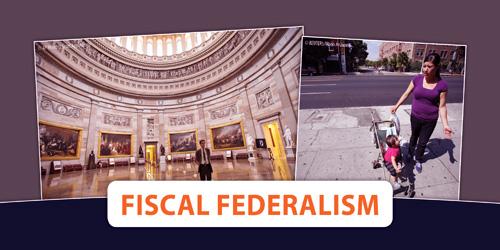Fiscal federalism is an economic framework for understanding the relationship between federal, state, and local governments that focuses on the division of spending and tax powers between these governments. Physical federalism is part of a broader public finance discipline. The term was coined in 1959 by Richard Musgrave, an American economist of German descent. In other words, it studies how efficiency (expenditure direction) and financial instruments (revenue direction) are allocated across different (vertical) levels of administration. An important part of its content is the provision of transfers or grants by which the central government shares revenue with lower-level governments.
The theory of revenue federalism assumes that a federal system of governments can be effective and efficient in addressing the problems it faces today, such as the precise distribution of income, efficient and effective allocation of resources, and economic stability. One focus is the division of responsibilities between different types of government. For example, the traditional theory of revenue federalism argues that central governments should be responsible for macroeconomic policies but local governments should be primarily responsible for fire protection services. Conditional transfer from a federal agency to a province or region involves a specific set of conditions. If a lower-level government is to make such a transfer, it must agree to the federal government’s spending guidelines. An example of this is the health transition in Canada.
The following are the advantages of financial decentralization: regional and local differences can be taken into account; Low planning and administrative costs; Competition among local governments in favor of organizational and political innovation; its impact is greater in more efficient politics as a citizen. Unconditional grants are usually cash or tax point transfers, no spending instructions. An example of this is the transfer of the federal equation. Economists often use the term “financial federalism” to refer to a portion of public money. Public finance is the economics of government spending and taxes, and economists apply the label of “royal federalism” when more than one type of government is involved. This does not mean, however, that all forms of government are ‘fissile’ federalism, simply that ‘physical federalism’ is a set of principles that can be applied to all countries in an effort to ‘monarchical decentralization’. Revenue federalism also has various disadvantages: lack of accountability to state and local governments; Lack of availability of qualified staff; The possibility of people choosing where to stay; A certain degree of local government from national government; And lack of public spending infrastructure at the local level. Chanchal Kumar Sharma made it clear that “while revenue federalism constitutes a set of guiding principles, a guiding concept” that helps to create financial relations between the national and regional levels of government, “on the other hand monarchical decentralization is the process of implementing such policies.”
Conservative revenue federalism ignores the political institutions and political power of politics. Physical federalism must also be distinguished from the second economic theory of federalism, competitive federalism. It has also changed the traditional intergovernmental relationship. National revenue policy and financial decisions are the main vehicles for building intergovernmental relations. The new generation of scholars of federalism and fiscal federalism indicates that the theory of fiscal federalism has evolved considerably over time. The goal of federalism in the modern fiscal year is not only to ensure efficient allocation of resources, but also to protect the independence and control the power of government, to share legislative and financial efficiency, to strengthen political participation, and to preserve markets.













